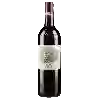
Château VermontLa Grande Cuvée Rouge
This wine is a blend of 2 varietals which are the Petit Verdot and the Merlot.
In the mouth this red wine is a powerful with a nice balance between acidity and tannins.
This wine generally goes well with poultry, beef or veal.
Taste structure of the La Grande Cuvée Rouge from the Château Vermont
Light | Bold | |
Smooth | Tannic | |
Dry | Sweet | |
Soft | Acidic |
In the mouth the La Grande Cuvée Rouge of Château Vermont in the region of Bordeaux is a powerful with a nice balance between acidity and tannins.
Wine flavors and olphactive analysis
On the nose the La Grande Cuvée Rouge of Château Vermont in the region of Bordeaux often reveals types of flavors of cherry, oaky or oak and sometimes also flavors of red fruit.
Food and wine pairings with La Grande Cuvée Rouge
Pairings that work perfectly with La Grande Cuvée Rouge
Original food and wine pairings with La Grande Cuvée Rouge
The La Grande Cuvée Rouge of Château Vermont matches generally quite well with dishes of beef, veal or game (deer, venison) such as recipes of melt-in-the-mouth pork tenderloin casserole, veal tagine with carrots or rabbit leg in foil on the barbecue.
Details and technical informations about Château Vermont's La Grande Cuvée Rouge.
Discover the grape variety: Petit Verdot
Petit Verdot noir is a grape variety that originated in France (southwest). It produces a variety of grape specially used for wine making. It is rare to find this grape to eat on our tables. This variety of grape is characterized by small bunches and small grapes. Petit Verdot noir can be found in several vineyards: South-West, Languedoc & Roussillon, Cognac, Bordeaux, Rhone valley, Provence & Corsica, Loire valley, Savoie & Bugey, Beaujolais, Armagnac.
Last vintages of this wine
The best vintages of La Grande Cuvée Rouge from Château Vermont are 2012, 2017, 2015, 2016
Informations about the Château Vermont
The Château Vermont is one of of the world's greatest estates. It offers 15 wines for sale in the of Bordeaux to come and discover on site or to buy online.
The wine region of Bordeaux
Bordeaux, in southwestern France, is one of the most famous, prestigious and prolific wine regions in the world. The majority of Bordeaux wines (nearly 90% of the production Volume) are the Dry, medium and Full-bodied red Bordeaux blends for which it is famous. The finest (and most expensive) are the wines of the great châteaux of Haut-Médoc and the right bank appellations of Saint-Émilion and Pomerol. The former focuses (at the highest level) on Cabernet Sauvignon, the latter on Merlot.
The word of the wine: Friendly
Said of a wine whose aspects are pleasant and not too marked.














